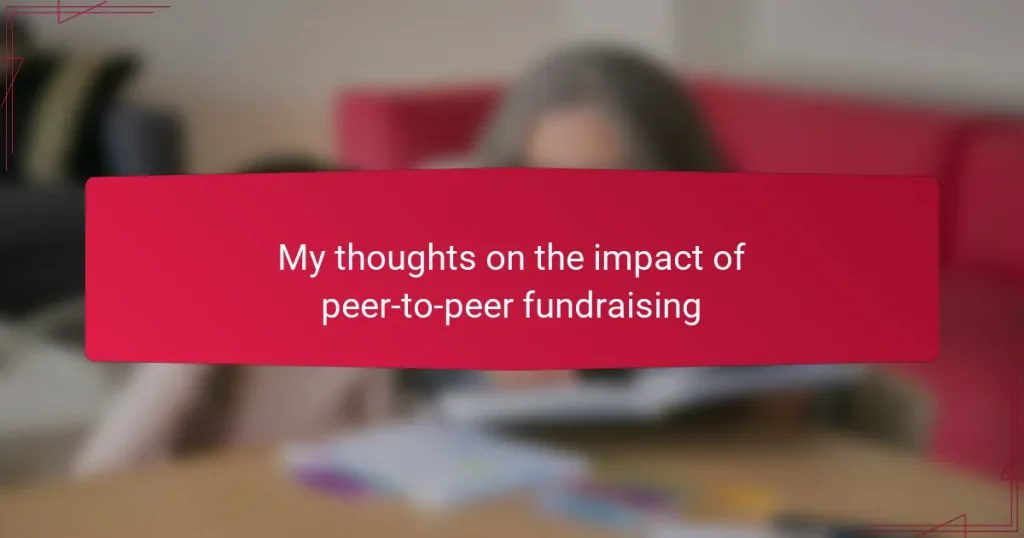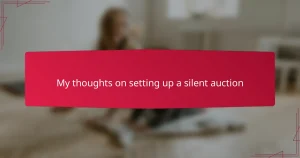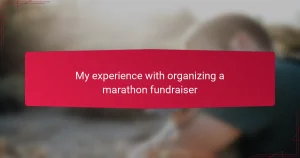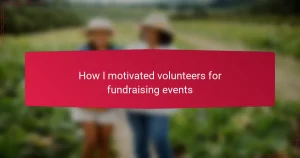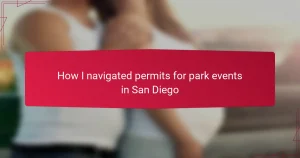Key takeaways
- Peer-to-peer fundraising leverages personal networks, turning individuals into passionate advocates that foster genuine connections.
- Success hinges on clear communication, personal storytelling, and setting achievable goals to keep participants engaged.
- San Diego family fundraising exemplifies community involvement, demonstrating the emotional and financial impacts of these initiatives.
- Challenges include managing family dynamics and logistics, which require early coordination and ongoing motivation to overcome.
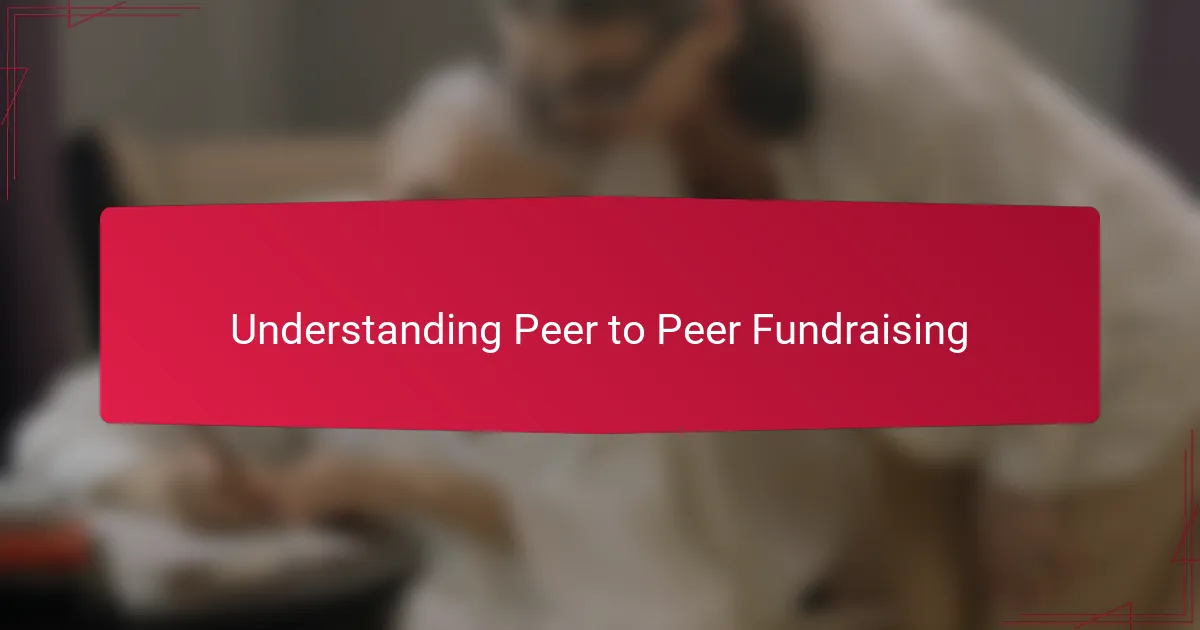
Understanding Peer to Peer Fundraising
Peer-to-peer fundraising, from what I’ve experienced, is truly about people rallying their personal networks for a cause they care about. It’s amazing how this method turns individual supporters into active fundraisers, almost like each person becomes a mini ambassador. Have you ever noticed how much more meaningful it feels when a friend reaches out to support a cause instead of a generic campaign doing all the asking?
One time, I joined a local family fundraising event where a close friend asked me to help by sharing her fundraising page with my contacts. That simple, personal ask made me want to contribute and spread the word because it felt genuine and heartfelt. It’s this personal touch that makes peer-to-peer fundraising so impactful—it’s fundraising fueled by trust and connection rather than just cold outreach.
At its core, peer-to-peer fundraising is about leveraging relationships and the power of storytelling. When fundraisers share their own stories and reasons for giving, it inspires others in a way that traditional fundraising can’t always achieve. Isn’t it incredible how a story told by someone you know can motivate you to take action so much more effectively?
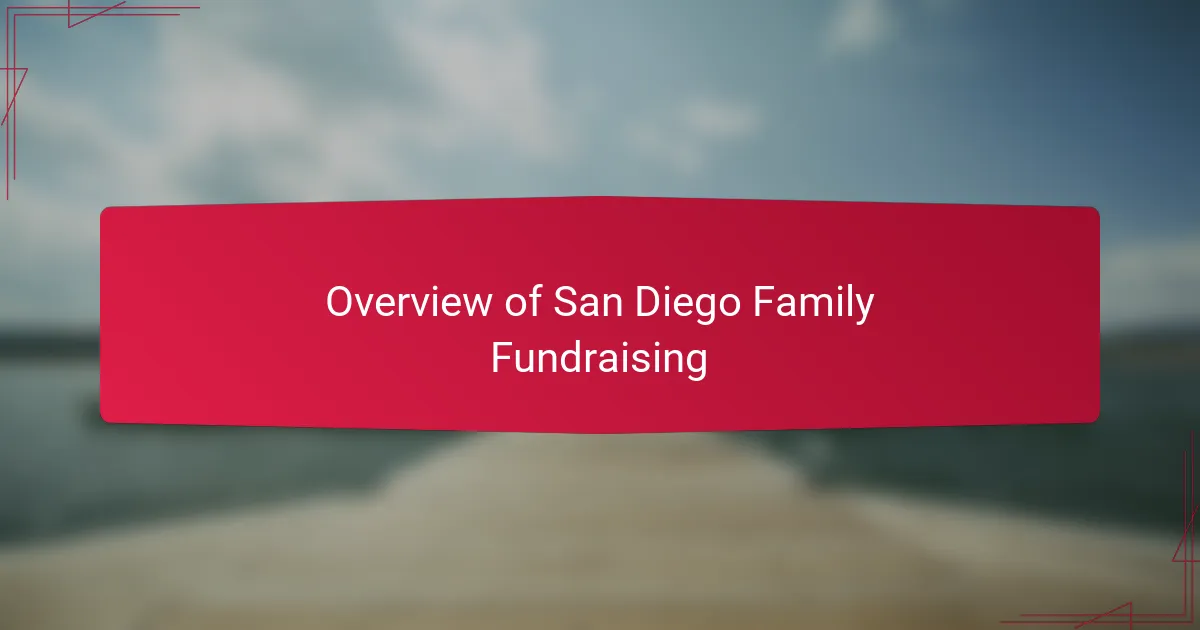
Overview of San Diego Family Fundraising
San Diego family fundraising is a vibrant and community-focused tradition that brings people together to support local causes. From school events to neighborhood drives, I’ve seen firsthand how these efforts not only raise money but also build lasting connections among families. The spirit of collaboration here really highlights the city’s strong sense of community pride.
| Aspect | San Diego Family Fundraising |
|---|---|
| Community Involvement | High – Strong neighborhood participation and support |
| Types of Fundraising | Varied – Includes events, online campaigns, and peer-to-peer initiatives |
| Impact | Emotional and financial – Strengthens bonds while raising essential funds |

Benefits of Peer to Peer Fundraising
| Benefit | Why It Matters |
|---|---|
| Expanded Reach | Peer to peer fundraising taps into personal networks, allowing families in San Diego to reach far beyond traditional donor pools. I’ve seen firsthand how one family’s outreach turned into a city-wide movement. |
| Increased Engagement | When friends and neighbors share their stories and fundraising goals, it creates a genuine connection. In my experience, this emotional involvement motivates donors more than standard appeals ever could. |
| Cost-Effective | Because supporters do much of the outreach themselves, organizations save on marketing expenses. I’ve noticed that this grassroots effort not only cuts costs but also builds a stronger sense of community ownership in the cause. |
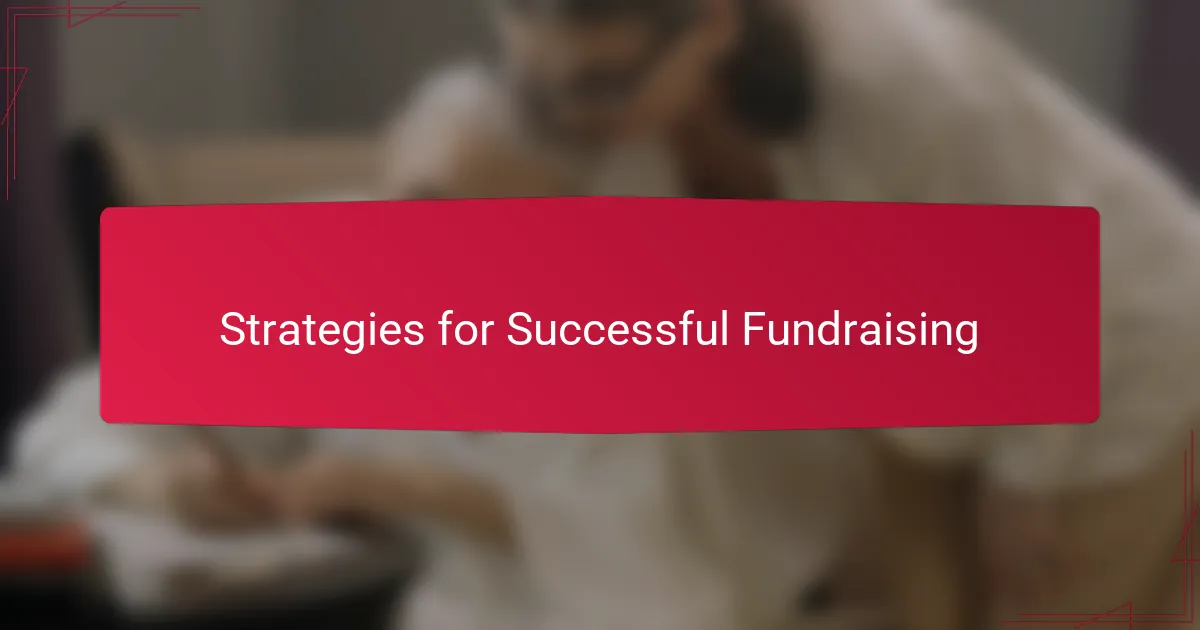
Strategies for Successful Fundraising
Successful peer-to-peer fundraising hinges on how well organizers engage their community. In my experience with family fundraising here in San Diego, personal stories shared by participants often spark a deeper connection and motivate more contributions. When people see the real impact of their support, they don’t just donate—they become passionate advocates.
One strategy that I found particularly effective is setting clear, achievable goals and celebrating milestones publicly. This keeps momentum going and makes every donor feel part of a bigger movement.
- Leverage personal storytelling to create emotional connections
- Set specific fundraising goals and track progress visibly
- Encourage friendly competition among participants
- Use social media to amplify reach and updates
- Provide regular thank-you messages to maintain donor engagement
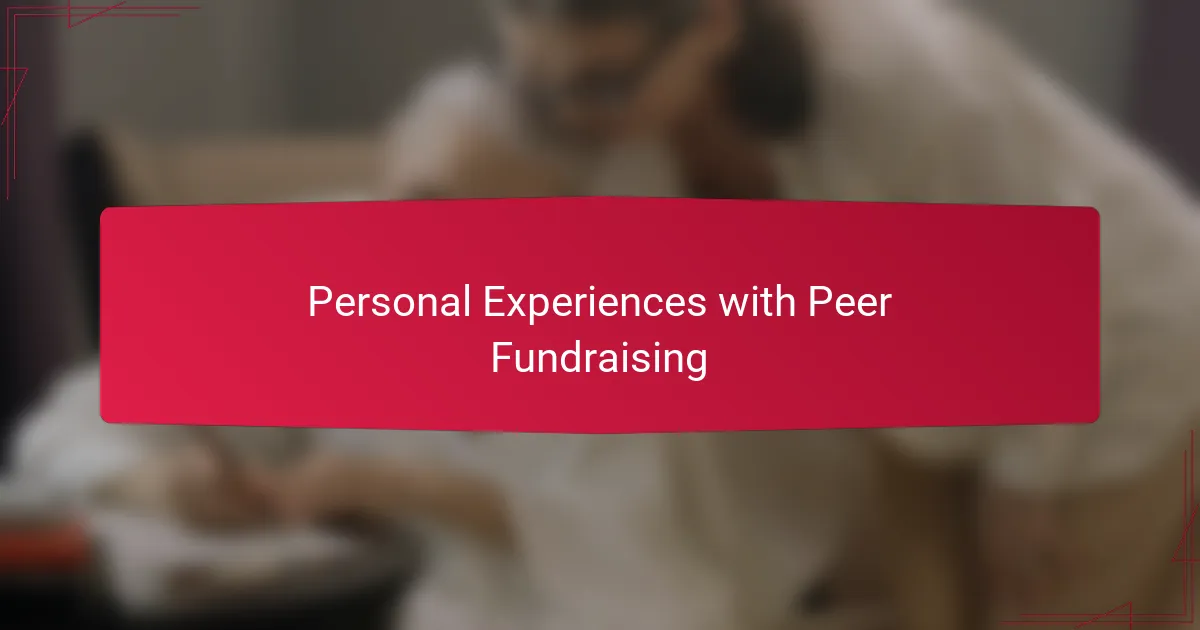
Personal Experiences with Peer Fundraising
Peer-to-peer fundraising truly reshaped how I engage with community support. When I first organized a small campaign for a local family in need, I was amazed by how friends and even acquaintances stepped up, sharing the cause passionately. It wasn’t just about raising money—it became a shared mission that brought us closer, showing me the powerful ripple effect of personal connections.
From my experience, the emotional payoff of seeing someone you know champion a cause is unmatched. It creates a sense of accountability and genuine care that traditional fundraising often lacks. Here are the aspects I’ve noticed make peer fundraising particularly impactful:
- Builds strong, authentic personal connections around a cause
- Encourages wider community involvement through trusted networks
- Generates momentum as supporters share their own stories and reasons
- Creates a supportive environment where donors feel emotionally invested
- Often leads to sustained engagement beyond the initial campaign
Seeing those heartfelt posts and messages during my campaigns really reinforced how peer-to-peer fundraising taps into empathy and shared purpose. It’s not just money changing hands; it’s human connections making a real difference.
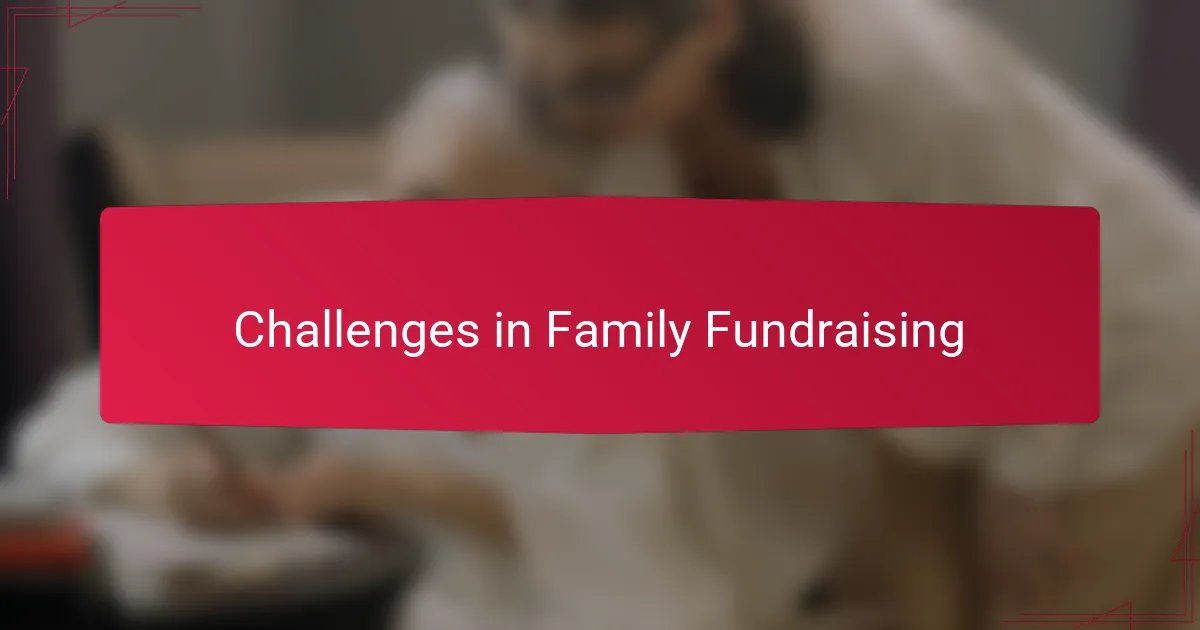
Challenges in Family Fundraising
One major challenge in family fundraising that I’ve encountered is balancing the emotional dynamics within the family. When fundraising is personal, it can sometimes bring underlying tensions to the surface, making collaboration difficult. I remember a campaign where family members disagreed on the goals, which slowed our progress and added stress.
Another hurdle is managing the logistics while keeping everyone motivated and engaged. Coordinating schedules, roles, and communication often feels like a full-time job. Based on my experience, organizing clear responsibilities early on helps, but maintaining enthusiasm requires constant encouragement.
- Differing opinions on fundraising goals or methods
- Time constraints and balancing family commitments
- Coordination of communication and responsibilities
- Emotional stress due to personal connections
- Sustaining motivation throughout the fundraising campaign
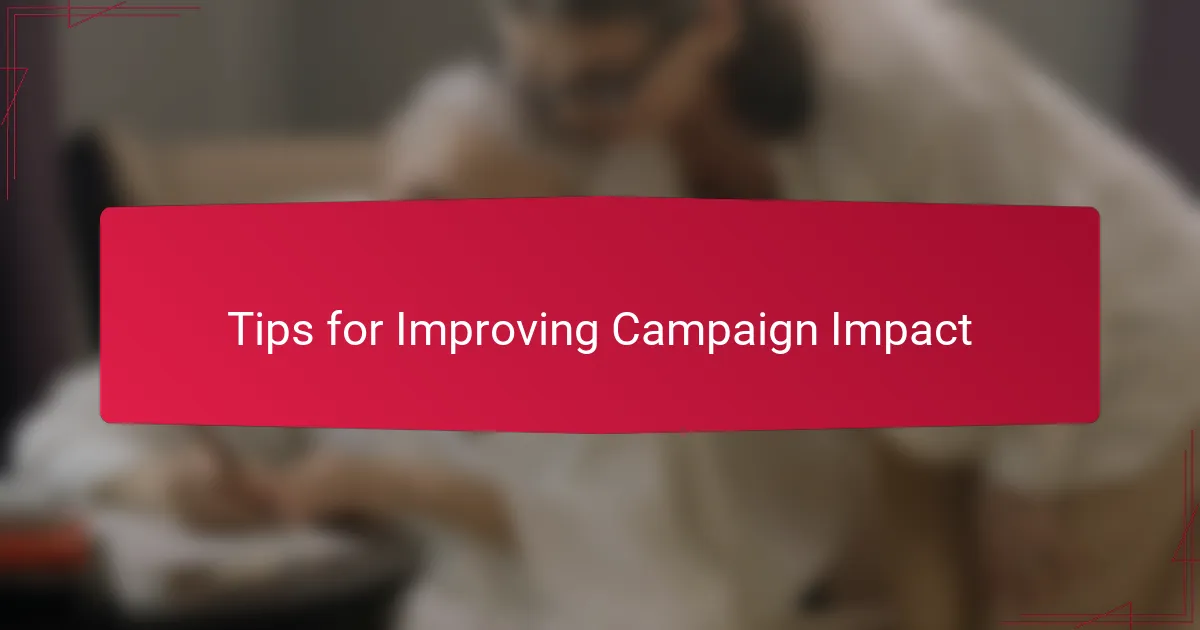
Tips for Improving Campaign Impact
Peer-to-peer fundraising can truly transform a campaign’s reach when done right. From my experience, clear communication and personal storytelling make a huge difference—they create emotional connections that motivate supporters. Also, setting achievable goals and providing easy-to-use tools encourages participants to stay engaged and share widely.
| Tip | Why It Works |
|---|---|
| Clear Communication | Helps supporters understand the cause deeply and feel emotionally connected. |
| Personal Storytelling | Creates authenticity and trust, making donors more likely to give and share. |
| Achievable Goals | Keeps participants motivated and confident in their fundraising efforts. |
| User-Friendly Tools | Makes it simple for fundraisers to track progress and share their campaign, boosting involvement. |
